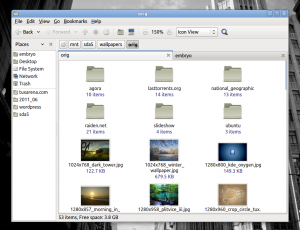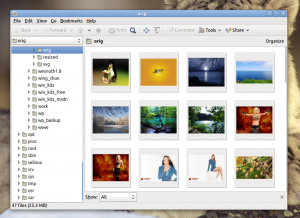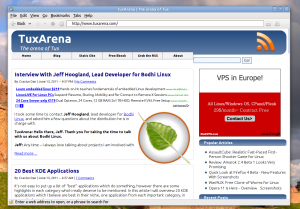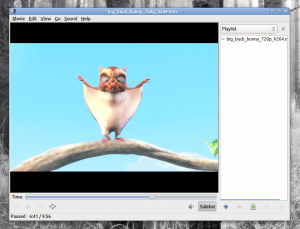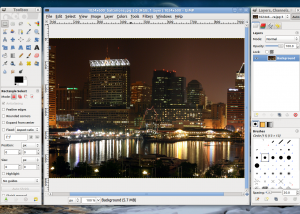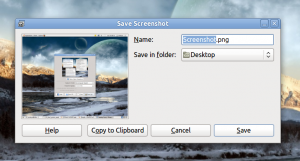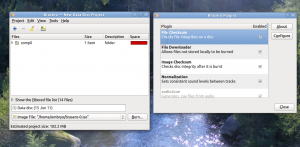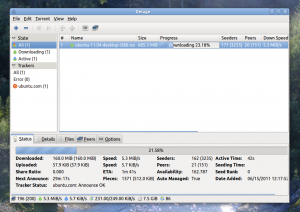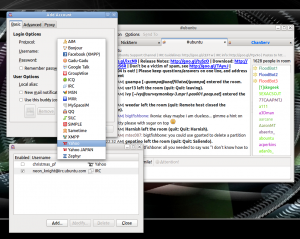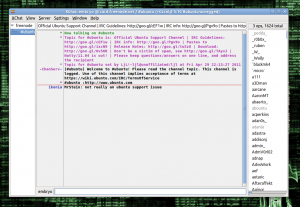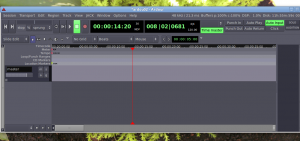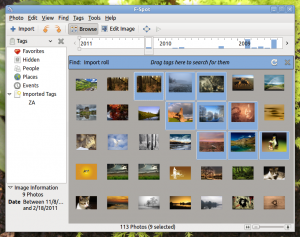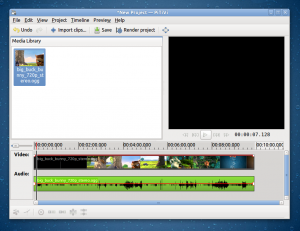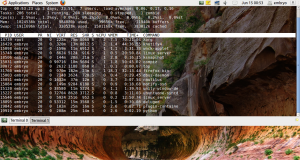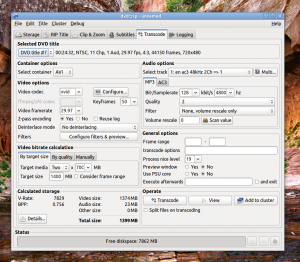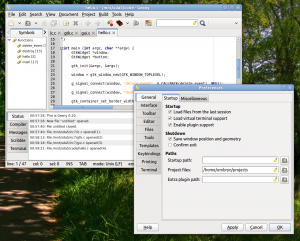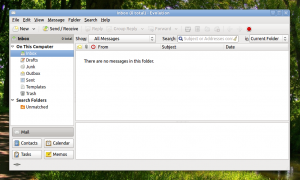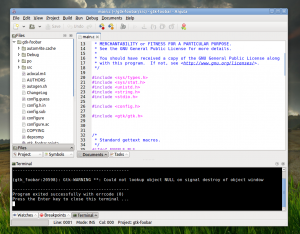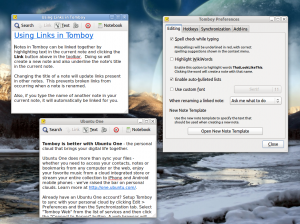After the overview of 20 best KDE applications, it’s time to have a look at what GNOME has to offer, right? This article overviews 20 of the GNOME applications which are, in my opinion, the best in their category. Only a single application from each category is included, and screenshots are attached. The list is put up in no particular order and at the end of the article I put noteworthy alternatives for each category (only GTK alternative applications).
Banshee – Music player (Homepage | Full review)
Not easy at all to choose from such a large variety of audio players for GNOME. At the end of the article I included not less than 8 alternatives for my choice, which is Banshee. Criticized by some for using Mono (I honestly don’t see any problems with it since it’s open-source), Banshee is a full-fledged music player and manager with features that include: media library, Internet services integration (Last.fm, Amazon MP3 Store), 10-band equalizer, playlists with configurable columns, ratings, tag editor, gapless playback, ReplayGain, bookmarks, cover art fetching, fullscreen mode, support for extensions.
Nautilus – File manager (Homepage | Full review)
Nautilus is the default file manager in GNOME, featuring tabs, multi-view modes, previews, a sidebar for fast access to common places. Nautilus can be extended with plug-ins and it supports custom context menus.
gThumb – Image viewer (Homepage)
When it comes to image viewers, there are pretty many available for GNOME, but only few of them offer decent functionality in my opinion. Most of them either have the same basic features over and over, or provide reduced functionality. My choice for the best image viewer has to be gThumb, being the only one offering good functionality and also enough features to make it a good image viewer. One of the drawbacks I could find about gThumb is that it opens with the same window size instead of the last size that was used (completely maximized in this case). This can be easily solved I guess and I hope it will get fixed. The second drawback is that opening multiple images will open all of them in the same gThumb instance, instead of opening a new application. Otherwise than that, gThumb is just perfect for viewing images.
Epiphany Browser – Web browser (Homepage | Full review)
This is the default web browser for GNOME (and also the only competitive web browser using GTK that I know), using the WebKit rendering engine, with a clean interface and features that include: tabs, customizable toolbar, password manager, smart bookmarks, and the most powerful, plug-ins support.
Totem Movie Player – Movie player (Homepage)
Totem supports all the popular video formats out there, playing formats like AVI, MKV, WMV. It supports subtitles and can read subtitles embedded in an MKV video. Except for those, it also plays DVDs and has DVD menus support. I must say, Totem has some nice features bundled with it: it allows taking screenshots and creating screenshot galleries, support video zooming in/out, playlists, subtitle font configuration (style and encoding), visualizations for audio files, change video aspect ratio and support for plugins.
GIMP – Image manipulation program (Homepage)
This is the “de facto” image manipulation tool for Linux, and for GNOME in particular. GIMP was the actual program for which the GTK toolkit was created. GIMP offers very powerful tools for editing and applying effects to images, including filters, various selection tools, image processing effects, and much, much more.
GNOME Screenshot – Screenshot-taking application (Homepage)
Well, GNOME Screenshot is actually an application which implements more than its interface shows. If you run it in command-line with certain parameters, GNOME Screenshot can also capture a selection on the desktop, a window only (with or without border), specify a border effect and the X display to use. Too bad these options aren’t shown in the graphical interface. Anyway, for a complete list of options type gnome-screenshot –help in a terminal. Here are three of them: -w capture the window under cursor, -a select area of the screen, -d specify delay in seconds. And don’t ask me why these are so carefully hidden.
Brasero – Burning program (Homepage)
KDE has K3b, GNOME has a few more than just one, including GnomeBaker or Brasero. My choice is Brasero, because it has some nice cool features like the pretty useful cover editor and it still provides the clean interface so specific to applications that come with default GNOME. Brasero can burn CDs/DVDs, ISO images, it can also create ISO images, burn in multi-session mode, vertical or horizontal layout, and has support for plugins.
Deluge – BitTorrent client (Homepage | Full review)
Deluge is a full-featured client for BitTorrent, implementing features like possibility to download only certain files in a torrent, possibility to configure speed limits, upload slots, detailed information about torrents (status, generic detailed info, files, peers and per-torrent options). Application-specific capabilities include system tray integration and support for plugins (Deluge bundles several useful plugins by default, like web interface and notifications).
Pidgin – IM Chat client (Homepage)
Along with Empathy, Pidgin is the most popular chatting application for the GNOME environment. Pidgin supports a lot of protocols, including: Yahoo, AIM, ICQ, Facebook, Google Talk or WLM. Except for IM, Pidgin also support Internet Relay Chat.
XChat – IRC client (Homepage)
XChat is the most powerful IRC client for GTK, with support for scripts in Perl, Python, Tcl, support for plugins, various configuration options and system tray integration.
Ardour – Audio editor (Homepage)
Ardour is a powerful non-linear audio editor for GNOME, with various options and tools. Ardour can be used for recording, mixing, editing and audio mastering. It offers possibilities to copy/paste, cut/crop audio selections, dragging, splitting, a crossfade editor and beat detection.
F-Spot – Photo manager (Homepage)
F-Spot is a feature-rich photo manager written in GTK. It organizes photos in catalogs by date and it make use of tags and ratings. It also has support for various plugins.
PiTiVi – Video editor (Homepage)
I know there are other good programs like Kino or Cinelerra, but I decided for PiTiVi, which is a pretty decent video editor written in PyGTK and using the GStreamer library.
Guake – Quake-style terminal (Homepage)
Guake is a Quake-style terminal which can be shown or hidden using the F12 default global keyboard shortcut. It supports tabs, transparency, font customization and keyboard shortcuts.
dvd::rip – DVD ripping application (Homepage)
With at least two counter-candidates (Acidrip and HandBrake), dvd::rip has to be my first choice when it comes to ripping DVDs. It’s full-featured and provides a tabbed interface, which guides you step by step in the ripping process.
Geany – Text editor (Homepage)
There are many good text editors for GNOME (with basic programming facilities), including the powerful SciTE, Medit or GNOME’s default Gedit. So picking just one is no easy task. I decided on Geany, which is really nice and feature-rich, and I listed the other alternatives at the end of the article.
Evolution – Email client (Homepage)
Evolution is the default email client in GNOME, and also one of the best applications for it. GTK alternatives here include Claws Mail and Balsa, which are also good email clients.
Anjuta – Integrated development environment (Homepage)
I personally prefer Emacs or a text editor that has basic functionality like indentation and highlighting support, but then again, I never used to make big projects, only small applications with few source files. When developing large-scale applications, one would usually prefer a full-fledged IDE, like Anjuta in our case. Anjuta is a powerful IDE which allows to program in various languages, and supports creating projects in GTK, Java or Python, also creating standard folders, standard configure scripts and skeleton code for them, making your work much easier.
Tomboy – Notes-taking application (Homepage)
Together with Zim, Tomboy is a great notes-taking application, and among the features it comes with are: spell-checking, font customization, bulleted lists, global hotkeys, synchronization, add-ins like export to HTML or Evolution integration.
Noteworthy alternatives
Notice that these are GNOME (GTK-based) only:
- File managers: Thunar, PCManFM, GNOME Commander, ROX-Filer
- Music players: Rhythmbox, Audacious, Listen, Exaile, Decibel Audio Player, Quod Libet, Muine, Foobnix, DeaDBeeF
- Image viewers: Mirage, Eye of GNOME, GPicView, Viewnior
- Notes-taking applications: Zim
- Burning applications: GnomeBaker
- BitTorrent clients: Transmission
- Instant Messaging clients: Empathy, Emesene (WLM only)
- Audio editors: Audacity (written with WxGTK)
- Photo managers: Shotwell
- Terminal emulators: Tilda, Terminator, Sakura
- DVD ripping applications: Acidrip, HandBrake
- Text editors: SciTE, Scribes, Medit, Gedit, Leafpad
- Email clients: Claws Mail, Balsa
Just being accurate: out of 20 apps, 8 are not GNOME applications, rather applications that use the GTK (Gimp Tool Kit) to develop the application. Note worthy examples are Deluge, Geany Pidgin and XChat.
One more remark. GNOME uses the AWEFUL AWEFUL MONO for some of its app. There is really no need to promote that crap, especially, when there are better alternatives implemented with out mono.
For example, Tomboy take about 30MB of dependencies and tons of memory to run, and there is a great alternative called GNOTE which is 100% compatible with Tomboy and written in C++ instead of MONO.
The same for FSPOT- there is Shotwell, a better app for half the resources.
Stop promoting mono crap applications.
there are better applications that do the same thing and better without mono.
Please replace tomboy with GNOTE, and F-Spot with Shotwell.
Ummm sorry but I don’t agree with this list. Shotwell is much better than F-Spot and there are TONS of movie players that are better than Totem, which has got to be the worst movie player of them all. Also it would have been nice to see ALTERNATIVES to Ubuntu’s default applications. Because there’s so many default applications this turns more in to a “fanboy” post than anything of real value.
Shutter is streaks ahead of gnome screenshot and one of the most brilliant apps out there for gnome….
Shutter runs sloooow on a netbook though!
Brasero best application? Personally I don’t think so. It lacks the most elementary features such as a fill% bar to show the % usage of the disc while you are filling the compil. It doesn’t order the files by name. Brasero is so much of a joke I had to buy Nero Linux. Was using K3B for a while but suddendly I had plenty of troubles. May be K3b has now improved but I no longer need it.
Love Deluge. I’m glad someone else is recommending it, I don’t see many people using it yet.
I remember deluge being great and I used it on kde but at some point it started using 100% CPU. That’s when I switched to ktorrent but still missing the server/client architecture and the simple handling a little.
How on earth does Ardour beat Audacity??? Seriously!!
“I know there are other good programs like Kino or Cinelerra, but I decided for PiTiVi..”
Errr??? What about kdenlive?? Or Openshot?? Both of these wipe the floor with PiTiVi and then some.





